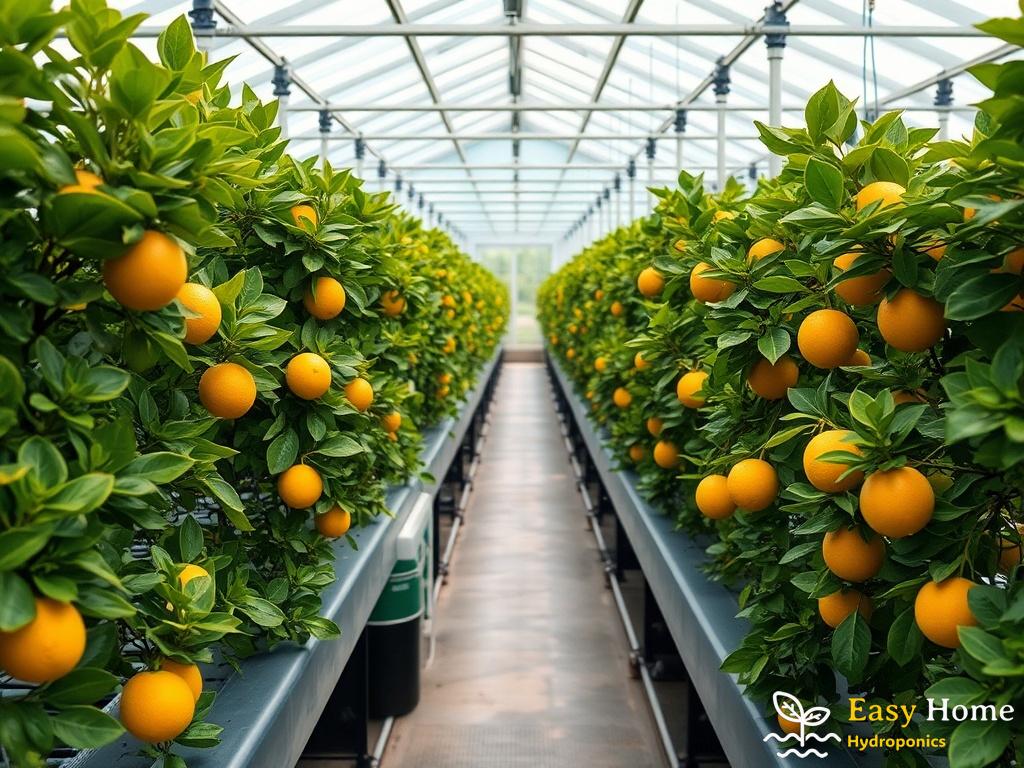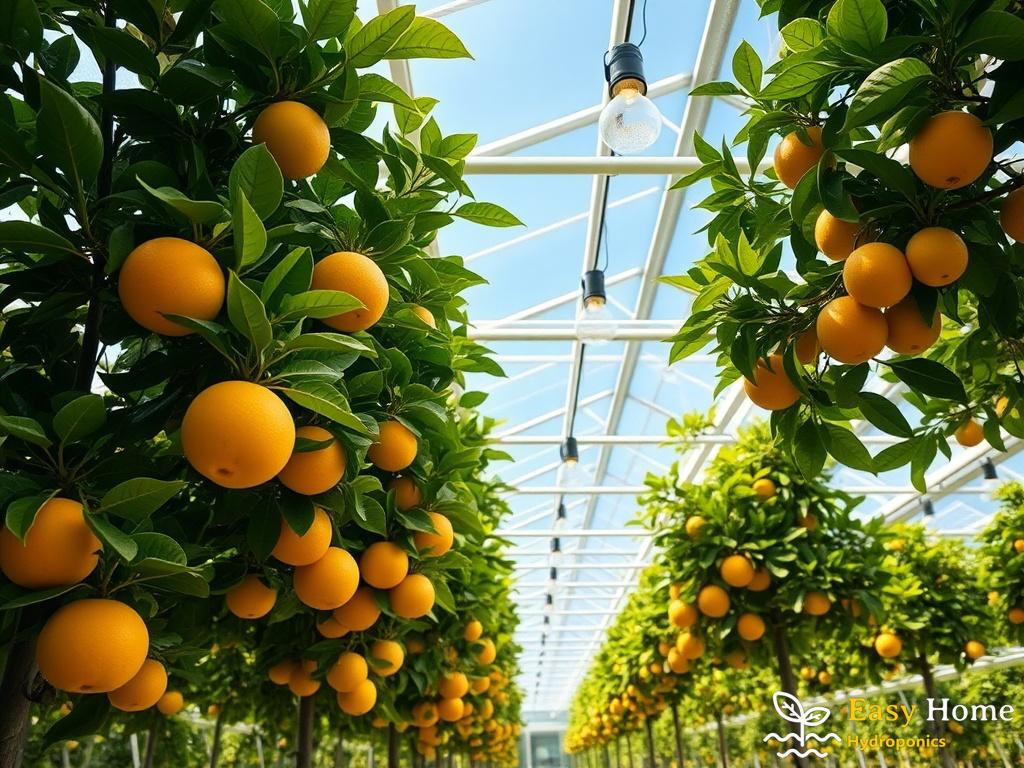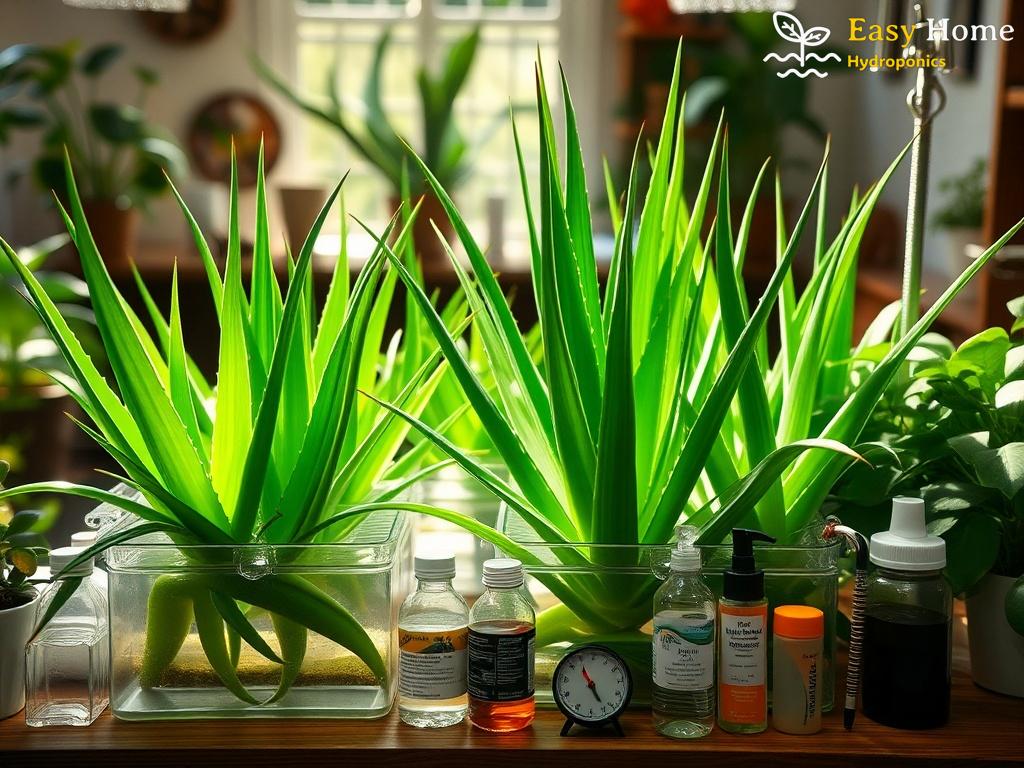Mastering Nutrient Solutions for Citrus Growth

In the realm of hydroponics, understanding the core elements of nutrient solutions is paramount. Citrus plants, known for their vibrant flavors and nutritional value, thrive in environments where every nutrient is meticulously balanced. These nutrients are the lifeblood of the plants, enabling them to grow robustly and produce juicy fruits. A well-crafted nutrient solution not only promotes growth but also enhances the plant’s resistance to diseases and pests.
When it comes to hydroponic citrus production, certain nutrients play a pivotal role. Each nutrient has a specific function that contributes to the overall health and productivity of the plants. To ensure that your citrus plants receive optimal nourishment, it’s essential to focus on the following key nutrients:
- Nitrogen: Vital for growth and leaf development.
- Phosphorus: Crucial for root development and fruit production.
- Potassium: Enhances fruit quality and stress resistance.
- Calcium: Important for cell wall structure and overall plant strength.
- Magnesium: A key component of chlorophyll, essential for photosynthesis.
Incorporating these nutrients into your hydroponic system requires careful planning and monitoring. Each nutrient must be available in the right proportions to avoid deficiencies or toxicities that can hinder plant growth.
Now that we understand the essential nutrients, let’s dive into how to create a nutrient solution tailored for citrus growth. The process involves a combination of water, fertilizers, and pH adjustments to ensure that citrus plants flourish.
Here’s a simple step-by-step guide to formulating your nutrient solution:
- Start with high-quality water. Ensure it is free of harmful contaminants.
- Select a balanced hydroponic fertilizer that provides macronutrients and micronutrients.
- Mix the fertilizer into the water according to the manufacturer’s instructions, paying attention to the recommended dilution rates.
- Adjust the pH level of the nutrient solution using pH up or down solutions to maintain it between 5.5 and 6.5, which is ideal for citrus.
- Use an EC meter to check the electrical conductivity, ensuring nutrient concentration is within the optimal range (1.5 to 2.5 mS/cm).
By following these steps, you can master the art of creating nutrient solutions that will give your hydroponic citrus the best chance to thrive.
Optimizing Light Conditions for Maximum Yield

In the dynamic world of hydroponic citrus cultivation, light plays an indispensable role in determining the health and productivity of plants. With the right light conditions, citrus trees can produce bountiful yields of vibrant, flavorful fruits. However, optimizing these light conditions goes beyond simply providing adequate illumination; it involves understanding the nuances of light spectrum, duration, and intensity. This is where advanced techniques come into play, transforming the way growers approach their indoor gardens.
Light is not just light; it consists of various wavelengths that affect plant growth in different ways. Photosynthetically Active Radiation (PAR) is the range of light that plants utilize for photosynthesis, typically between 400 to 700 nanometers. To optimize citrus growth, it is crucial to provide a balanced spectrum that includes both blue light, which promotes vegetative growth, and red light, which supports flowering and fruiting. By utilizing LED grow lights specifically designed for plants, growers can manipulate these wavelengths to maximize their citrus production.
Another key factor in optimizing light conditions is the duration and intensity of light exposure. Citrus plants generally require around 12 to 16 hours of light per day, depending on their growth stage. Implementing a photoperiod that mimics natural sunlight can significantly enhance growth and fruit quality. Furthermore, the intensity of light is equally important; too little light can lead to stunted growth, while excessive light can cause leaf burn and stress. Utilizing light meters can help growers maintain the ideal intensity levels, ensuring their citrus trees receive the optimal amount of light.
| Light Type | Wavelength (nm) | Effect on Citrus Growth |
|---|---|---|
| Blue Light | 400-500 | Encourages leaf growth and overall plant health |
| Red Light | 600-700 | Promotes flowering and fruit development |
| Green Light | 500-600 | Less effective for photosynthesis but helps in overall plant development |
By carefully controlling both the spectrum and duration of light exposure, hydroponic citrus growers can create an environment that closely mimics the natural conditions under which these plants thrive. Incorporating advanced lighting systems not only enhances the aesthetic appeal of the growing area but also boosts productivity and fruit quality, leading to a successful harvest.
Pest Management Strategies in Hydroponic Systems
In the lush world of hydroponic citrus production, the vibrant greens of your plants can sometimes mask a lurking danger: pests. These tiny intruders can wreak havoc if not managed effectively, turning your flourishing garden into a battlefield. The key to successful pest management lies in understanding the dynamics of these pests, their life cycles, and their preferred environments. Hydroponic systems, while offering the advantage of controlled conditions, can become breeding grounds for pests if not properly monitored. Therefore, implementing proactive strategies is essential to safeguard your citrus crops.
Adopting a proactive approach to pest management can significantly enhance the resilience of your hydroponic citrus plants. One effective strategy is to maintain a clean and organized growing environment. This includes regularly removing any plant debris, which can harbor pests and diseases. Moreover, introducing beneficial insects, such as ladybugs and lacewings, can act as a natural line of defense, preying on common pests like aphids and spider mites. Additionally, embracing companion planting—growing aromatic herbs alongside your citrus—can deter pests naturally, creating a symbiotic relationship that benefits both plants. By fostering biodiversity and maintaining hygiene, growers can create an ecosystem that is less inviting to pests.
As technology advances, so do the methods available for pest management in hydroponic systems. Utilizing sensors and monitoring systems can provide real-time data on environmental conditions, helping growers identify potential pest threats before they escalate. For instance, automated traps equipped with sensors can detect the presence of pests and alert growers, allowing for timely intervention. Moreover, employing organic pesticides and biopesticides can offer a targeted approach to pest control, minimizing harm to beneficial insects and the plants themselves. The integration of these advanced solutions not only enhances pest management but also promotes a sustainable approach to hydroponic citrus production, ensuring that your crops remain healthy and productive.
Innovative Hydroponic Systems for Citrus Cultivation
As the demand for fresh, high-quality citrus fruits continues to rise, hydroponic systems are becoming an increasingly popular choice for growers seeking innovative solutions. These advanced systems not only optimize space and resources but also allow for precise control over environmental conditions. By harnessing the power of technology and nature, growers can create ideal conditions for citrus cultivation, leading to enhanced yields and superior fruit quality.
The Rise of Vertical Hydroponics is a game-changer in the world of citrus production. This innovative approach utilizes vertical space to maximize plant density without sacrificing light exposure or airflow. By stacking growing trays and employing advanced LED lighting systems, growers can achieve impressive results even in limited spaces. This method encourages efficient nutrient uptake and promotes healthy growth, allowing citrus plants to flourish as they reach for the light. Moreover, vertical hydroponics minimizes the risk of pest infestations, as the layered structure can deter pests from easily accessing the plants.
Another exciting advancement is the integration of Automated Nutrient Delivery Systems. These systems are designed to monitor and adjust nutrient levels in real-time, ensuring that citrus plants receive optimal nourishment at all times. Utilizing sensors and data analytics, growers can track nutrient uptake and adjust the solution accordingly, leading to healthier plants and increased fruit production. This precision farming technique not only saves time but also reduces waste, creating a more sustainable approach to hydroponic citrus cultivation. The ability to deliver tailored nutrient solutions quickly and efficiently allows growers to respond to the unique needs of their crops, resulting in an impressive transformation of the growing environment.
Furthermore, the incorporation of Climate Control Technologies is revolutionizing hydroponic systems for citrus production. By utilizing advanced environmental control systems, growers can maintain optimal temperature, humidity, and airflow within the growing area. These technologies enable precise adjustments based on the plants’ needs, promoting healthy growth and fruit development. For instance, during critical growth phases, maintaining consistent humidity levels can significantly impact fruit quality and yield. Additionally, automated climate control systems can reduce energy consumption, making hydroponic citrus production not only more efficient but also more environmentally friendly.
Harvesting Techniques for Peak Flavor and Quality
In the world of hydroponic citrus production, the moment of harvest can make all the difference between a good fruit and a spectacular one. Timing is crucial; it’s not just about when to pick, but understanding the signs that indicate when your citrus is at its peak flavor and quality. Mature fruits will develop a vibrant color, and their scent will become more pronounced, signaling that they are ready for harvest. Experienced growers often rely on a combination of visual cues and sensory evaluation, ensuring that every fruit is picked at the perfect moment to maximize sweetness and juiciness.
Once the citrus fruits are deemed ready for harvesting, the techniques employed during the process can significantly impact their quality. Gentle handling is paramount; citrus fruits are sensitive and can bruise easily, leading to diminished flavor and shelf life. Utilizing specialized harvesting tools, such as clippers or scissors, can help prevent damage during the picking process. Additionally, harvesting during cooler parts of the day can reduce stress on the fruits, preserving their freshness. It’s also essential to avoid stacking harvested fruits too high, as this can lead to crushing and spoilage. Proper techniques not only enhance the quality but also extend the marketability of your citrus produce.
The journey of citrus fruits does not end once they are picked. Implementing effective post-harvest practices is vital to maintaining the flavors and quality that consumers crave. After harvesting, fruits should be promptly cleaned and sorted to remove any damaged or diseased specimens. This step is essential to prevent spoilage and maintain the integrity of healthy fruits. Furthermore, controlling the storage environment—by regulating temperature and humidity—can significantly prolong the shelf life while preserving flavor. Utilizing ethylene gas management techniques can also aid in ripening control, ensuring that fruits reach consumers with the best possible taste experience. By paying attention to these details, hydroponic growers can produce citrus that not only satisfies the palate but also stands out in the competitive market.




